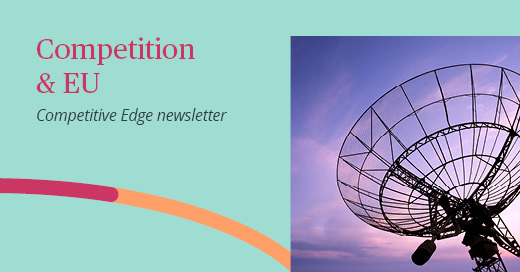Patents: time of disclosure of prior art published on the internet
The High Court has held the relevant date of publication on the internet of a novelty-destroying document was the date, not the time, at the patent office at which the priority application was filed.
Background
An invention is new if it does not form part of the state of the art. The state of the art comprises all matter which has at any time before the priority date of that invention been made available to the public (whether in the UK or elsewhere) by written or oral description, by use or in any other way (section 2, Patents Act 1977) (1977 Act). Similar provisions are set out in Article 54 of the European Patent Convention (EPC).
The EPO Examining division has held that the availability of the relevant document on the internet anywhere in the world on the day before the date of filing of the patent application made that document prior art. In conflicting case law, the EPO Opposition division has held that the “controlling time” was the time in the location of the office of first filing.
Facts
E owned a patent for an invention in the mobile telecommunications field. The priority date claimed was 8 January 2008, based on a US application. U acquired the patent from E. The patent had been declared as essential to the 4G telecommunications system.
U argued that H and S had infringed the patent by manufacturing and selling equipment that operated in accordance with a 4G standard to which the patent was essential. H and S argued that compliance with the standard did not fall within the claims and that the patent was invalid.
H and S relied as prior art on a document produced by E, which the parties agreed was an enabling disclosure of the invention. E’s document was uploaded by E in Europe on to the file server, and became available publically online, on 8 January 2008 in Central European Time (CET).
The priority document for the patent was filed at the US Patent Office (USPTO) on 8 January 2008 in CET and in Eastern Standard Time (EST).
Decision
The court held that the patent was valid and that devices complying with the relevant standard would infringe. E’s claims were entitled to priority and E’s document, which was otherwise an enabling disclosure, did not have a relevant publication before the priority date. The court dismissed H and S’s arguments on lack of novelty and obviousness.
The timing of the disclosure of this prior art document published on the internet depended on the relevant time zone to be taken as the correct frame of reference, which could be: CET, where it was uploaded; Greenwich Mean Time (GMT), where the patent was in force (UK); or EST, where the priority document was filed (USPTO).
H and S argued that the time in Hawaii was the relevant time zone because when the document became available on the internet it was 7 January 2008 to some people in the world.
The court found that the “controlling time” was the time in the location of the office of first filing. The words used in the 1977 Act and the EPC referred to things made available before the priority date. There was no reference to ascribing a calendar date to an item of prior art.
To decide whether potential prior art was made available to the public anywhere in the world before the priority date, the priority date must first be determined. At any given moment, the time and date around the world were different. In order to decide if an event took place before it, the priority date had to be based on some frame of reference, and the only frame of reference which made sense was the one at the patent office at which the priority document was filed. Using any other approach would produce the odd result that an event which happened after the priority document was filed could count as prior art.
The international system of priority ensured that the date on which a priority document was filed and the office in which it was filed were always known facts. Knowledge of the time at which a priority document was filed was not required. If the law required one to know what date or time it was elsewhere in the world when a priority document was filed, one would need to know the time of filing as well as the date, and that knowledge is not required by either the EPC or the 1977 Act.
Here, the priority application was filed in the USPTO on 8 January, so the frame of reference was EST. E’s document was uploaded to the internet, and so made available to the public, also on 8 January, so the fact that it would have been available in Hawaii on 7 January was irrelevant and it was not prior art.
Comment
When the priority system was set up by the 1883 Paris Convention, simultaneous publication across the whole world of a document was unthinkable, and it was also impossible in the 1970s when the EPC and the 1977 Act were drafted. As a result the situation which arose in this case was not expressly covered by legislation. The court’s approach provides a practical solution in cases of simultaneous worldwide publication. Best practice would be to ensure that first filing of the patent is completed before any potential prior art document is uploaded to the internet, which was not the case here, where the uploading took place 14 hours before the filing, although fortunately on the same day in both the place of uploading and the place of filing. Ideally co-ordination between inventors and patent attorneys should aim to prevent any risk of prior publication on the internet or elsewhere.
Case: Unwired Planet International Ltd v Huawei Technologies Co Ltd & Ors [2015] EWHC 3366 (Pat).
First published in the January/February 2016 issue of PLC Magazine and reproduced with the kind permission of the publishers. Subscription enquiries 020 7202 1200.


